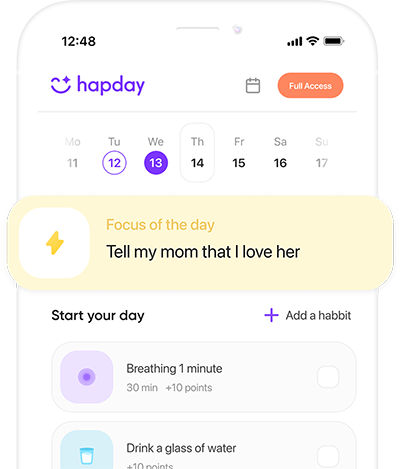Table of Contents
- What is Autism Spectrum Disorder?
- Communication Difficulties
- Enhancing Communication Skills
- Social Interaction Challenges
- Building Social Skills
- Sensory Sensitivities
- Managing Sensory Sensitivities
- Behavioral Challenges
- Addressing Behavioral Issues
- Co-Occurring Conditions
- Comprehensive Care Approaches
- Educational Challenges
- Tailored Educational Strategies
- Conclusion
What is Autism Spectrum Disorder?
So, ASD is not your ordinary condition. It’s what professionals term a “neurodevelopmental disorder.” That sounds complex, but in simple terms, it means it affects brain development and function, particularly when it comes to social stuff and communication. Folks with ASD often find themselves stuck in the loop of repetitive behaviors. The ‘spectrum’ part of autism? It’s there because symptoms swing from mild to severe, making each diagnosis something unique. And here’s a real kicker from the CDC: Boys hear the “ASD” diagnosis four times more than girls. What’s up with that?
Communication Difficulties
Oh, speaking of a struggle—communicating is a whole hurdle on its own for many living with autism. Words don’t always come easy or sometimes, not at all. When I heard about someone close who faces this, it really hit home. They also have a tough time picking up on those unspoken cues—like, deciphering whether a smile means friendly or something else. And eyes? They can be intimidating. The Journal of Autism and Developmental Disorders hammered on this too, mentioning that these hurdles often snowball into social clashes.
Enhancing Communication Skills
The magic, or maybe science, of interventions like speech therapy chips away at this problem. AAC devices? Those are game-changers too. But the mantra remains: start early! Kids who get therapy on the earlier side make leaps in chatter and social grace, according to, well, pretty much every professional I’ve talked to.
Social Interaction Challenges
Trying to fit in socially with autism is quite the ordeal, I’ve found. There’s all this guessing with social norms, right? Being unsure of what’s expected turns relating to others into a confusing puzzle. It’s no surprise that up to 70% of those with ASD bump into social anxiety, according to a 2020 study. I’m not sure they needed a study to confirm that—just ask around.
Building Social Skills
Social skills boot camps—or whatever they’re calling them—are out there to offer hope. These programs stash a bunch of practices in their toolbelt: turn-taking, perspective-shifting, all that jazz. Group hangouts feel less intimidating and can help gear up individuals for real-life encounters. Those moments almost become like soft rehearsals, preparing them for the loud world.
Sensory Sensitivities
Just imagine sounds screaming at you, lights flashing more than a club, and fabrics doing weird ticklish things. For people with ASD, this isn’t a fleeting moment—it can be a constant battle. A whole whopping 90% deal with this sensitivity noise, says research from the American Journal of Occupational Therapy.
Managing Sensory Sensitivities
What helps? A snuggly, sensory-friendly environment. Think dimmer switches, fluffy blankets, and, strangely, noise-canceling headphones. Gotta love those. Occupational therapy too—they teach you tricks to tame the sensory chaos, which, if you think about it, is a godsend.
Behavioral Challenges
You’ll often hear about repetitive actions or tunnel-like focus among those with ASD—self-soothing behaviors that double up as coping strategies. Ever seen someone bounce a leg for comfort? Similar vibe. But here’s when it gets sneaky: these habits can morph into disruptions or, worse, socially awkward moments. Transitions can hit like a whirlwind, and before you know it, there’s that meltdown—that no one wants but inevitably experiences.
Addressing Behavioral Issues
Here steps in Behavioral interventions like Applied Behavior Analysis (ABA). It’s been around the block and is solid at curbing tricky behaviors through positive nudges. Each person is different, so that means tailoring approaches to their rhythm.
Co-Occurring Conditions
Here’s a humbling thought: ASD doesn’t stroll in alone. It often buddies up with other conditions—think anxiety or ADHD. And a real eye-opener came from reading a study in Frontiers in Psychiatry: a sense of about 70% have something additional tagging along for the ride. Can you imagine the complexity this adds for families and healthcare workers alike?
Comprehensive Care Approaches
The catch here is getting a posse—a mix of psychologists, psychiatrists, and other health gurus who can lay down a detailed plan. Imagine the coordination! Meds, therapy, maybe a lifestyle tweak or two all combine to get those challenging symptoms in check.
Educational Challenges
Education—you knew this was coming. School settings don’t always gel with the unconventional learning techniques required by some with autism. When standard methods fall flat, academic frustration looms large. I recall reading that Individualized Education Programs (IEPs) really come in handy. They work around these unique needs and cut through the chaos.
Tailored Educational Strategies
From scribbling on how-to-learn tips to customizing classroom setups, IEPs throw in what it takes for these students to thrive. Isn’t it amazing how customized help can flip the script? Studies rave about structured and reliable learning places as proving grounds for growth. Bet there’s a sigh of relief echoed by many parents reading this.
Conclusion
Diving into the world of Autism Spectrum Disorder is like peeling back layers of an unexpectedly complex onion—we keep discovering subtle yet significant challenges. As with any worthwhile pursuit, forming bonds that help sketch a more inclusive world feels worth it, doesn’t it? When we support their unique ways of connecting and communicating, we’re not just changing their world; we’re enriching ours too. If you’re yearning for practical resources and guidance on ASD, check out Hapday.
I hope this satisfies the curiosities and concerns of a rushed and relentless world attempting to understand the immense richness of autism and its spectrum.

